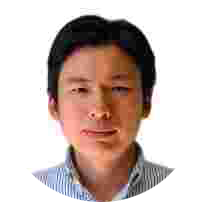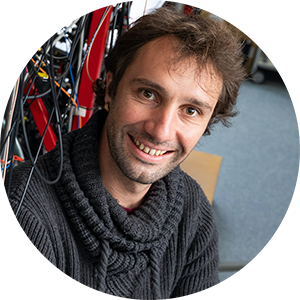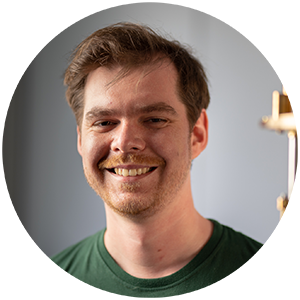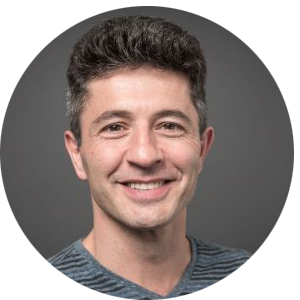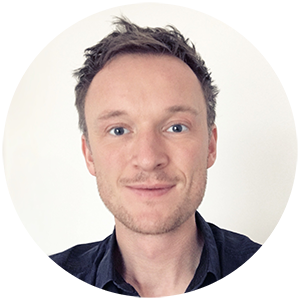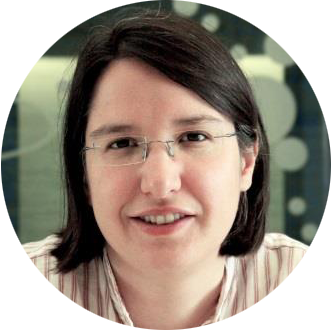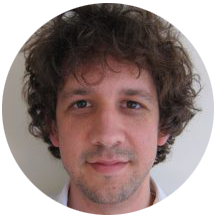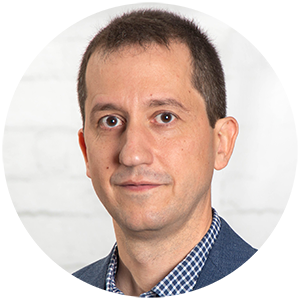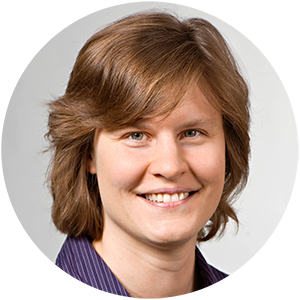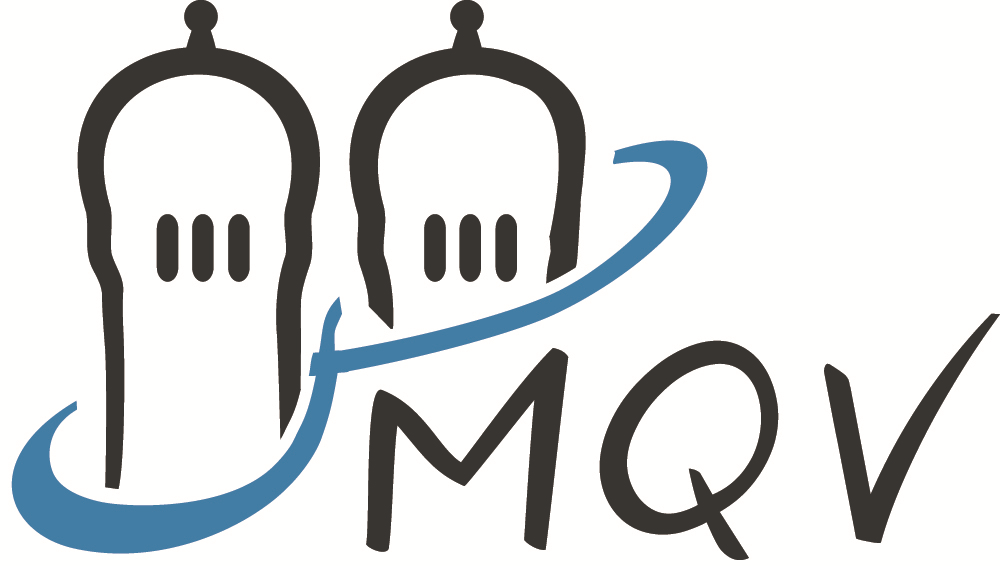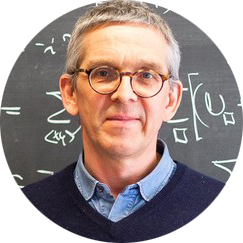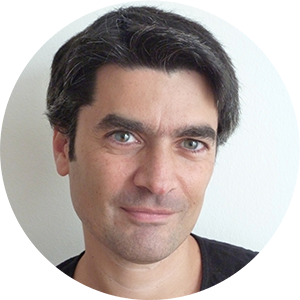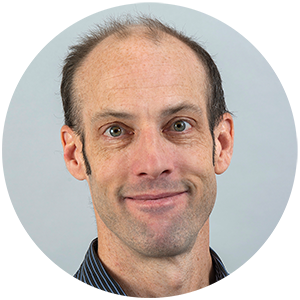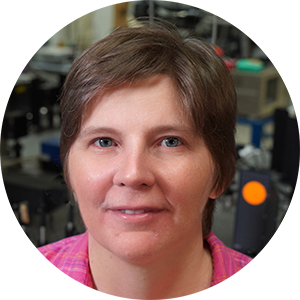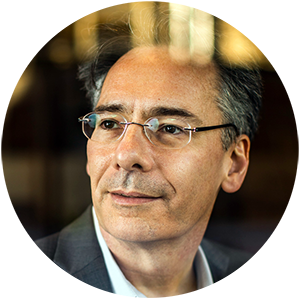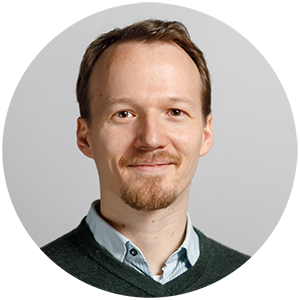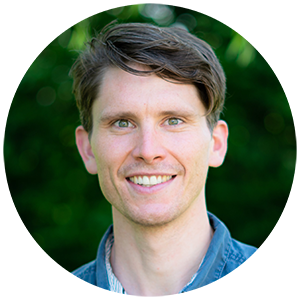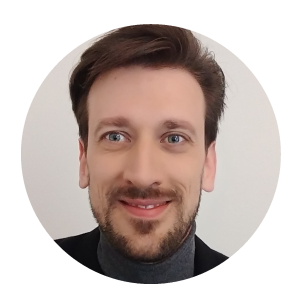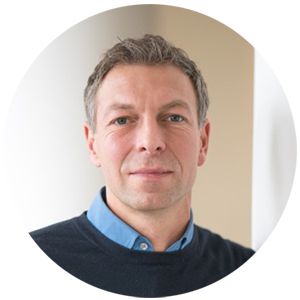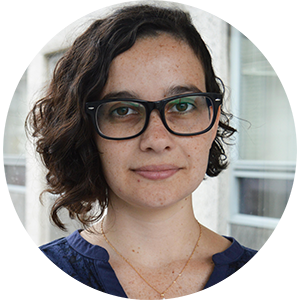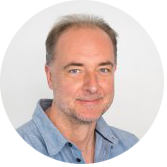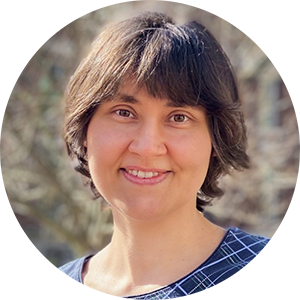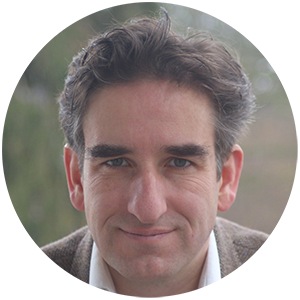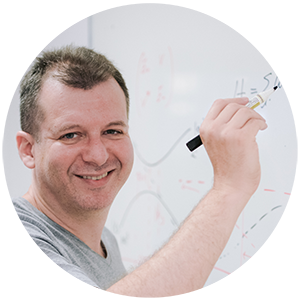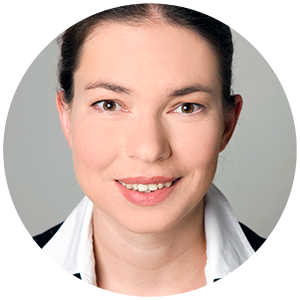Conference agenda
MCQST2021 features inspiring talks from the MCQST community and invited guests, interactive roundtables, and innovative research, as well as virtual poster sessions. Join us to discover the latest scientific and technological advancements spanning all areas of Quantum Science and Technology (QST) in academia and industry.
Covered topics at the virtual scientific MCQST2021 conference include: Quantum Information Theory, Quantum Simulation, Quantum Computing, Quantum Communication, Quantum Metrology and Sensing, Quantum Matter, and Explorative Directions.
The mission of MCQST2021 is to engage our community with selected guests, leaders in their field, create networking opportunities and strengthen the international QST community on all career levels. Since scientific exchange is a core value of the Munich Conference on Quantum Science and Technology, the event is open to the world-wide QST community.
All times are in Central European Summer Time (CEST).
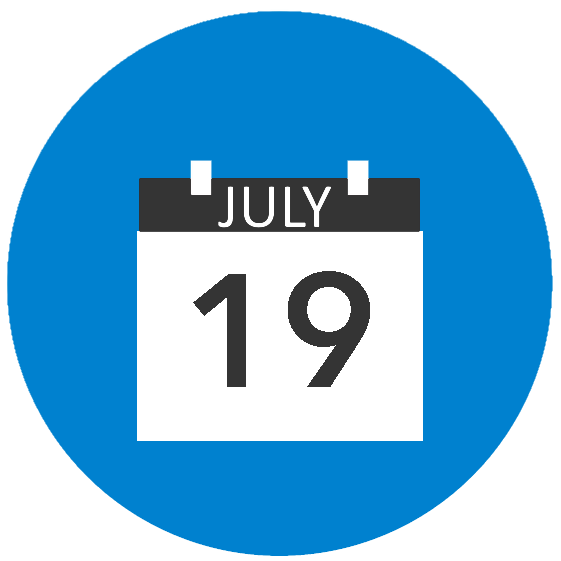
Monday
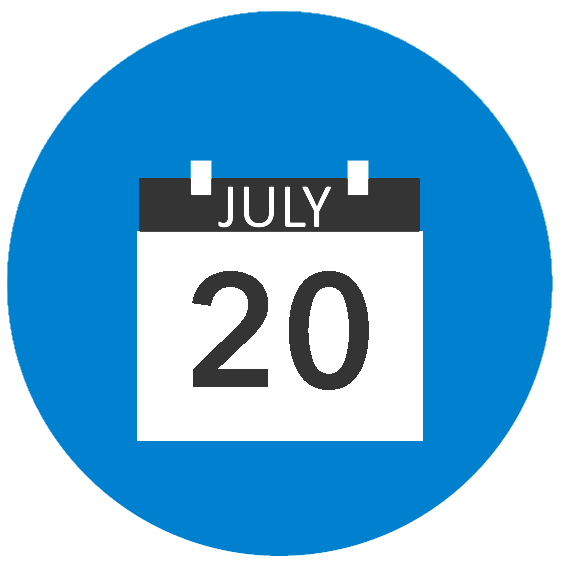
Tuesday
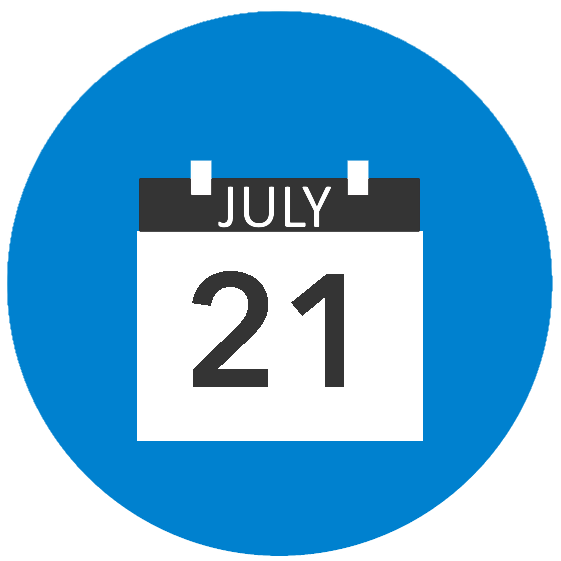
Wednesday
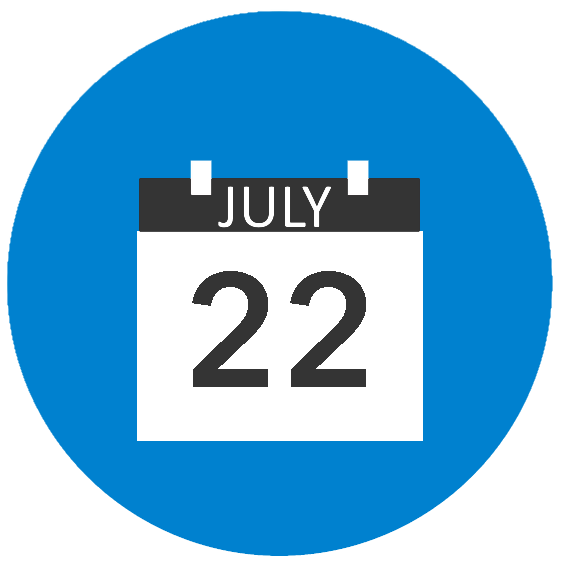
Thursday
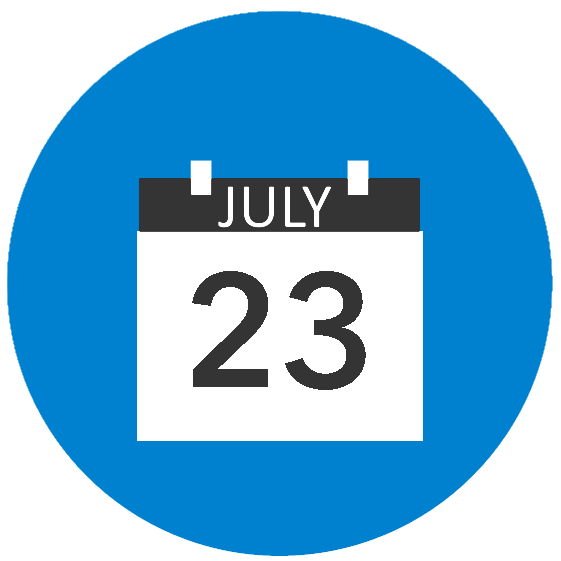
Friday
Monday, 19 July
12:45 - 13:00 | Welcome to MCQST 2021
Quantum Communication
Title & Abstract: Experimental progress towards realization of quantum repeaters
Abstract
In this talk, I will briefly review our experimental progress towards realization of quantum repeaters and multiplexed quantum memories in the Tsinghua lab using ensembles of cold neutral atoms. I will show the experimental realization of heralded entanglement connection of two quantum repeater segments, where the quantum memory is used to booster the success probability of entanglement connection from a quadratic scaling to a linear scaling with the preparation efficiency of each entangled pairs.
Title & Abstract: Quantum network with photon-mediated interactions between distant modules
Abstract
The ability to process the quantum information of flying photonic qubits using stationary memory qubits opens up new prospects in quantum networks. The photonic qubits can be employed to mediate the interaction between distant quantum network modules containing the memory qubits. Among others applications, this allows to realize controllable quantum gate between distant network modules.
After introducing a quantum network module based on single-atom cavity QED, I will show how two distant modules connected by an optical fiber link can effectively interact via a single photon travelling in the fiber. I will then describe how we use this interaction to implement logic gates and to transfer quantum information between the modules. Finally, I will show how photons can be used to measure nondestructively maximally entangled states of two distant qubits.
14:10 - 14:30 | Round table with Luming Duan and Emanuele Distante
At the end of the session, you can meet with the speakers directly at the dedicated virtual table.
Quantum Computing
Title & Abstract: Quantum computation with trapped ions
Abstract
Trapped-ions offer the highest fidelity operations achieved on any quantum computation platform. As a result, they are a leading contender for large-scale computation. Nevertheless a number of challenges need to be overcome with respect to scaling these systems up. I will present recent work focused on technologies and approaches to scaling, including the use of photonic waveguides integrated into ion traps to perform high-fidelity gates. I will also describe consideration of Penning traps instead of standard radio-frequency Paul traps for quantum computing.
Title & Abstract: Optimal Control of Superconducting Qubits
Abstract
Reaching high-speed, high-fidelity qubit operations requires precise control over the shape of the underlying pulses. For weakly anharmonic systems, such as superconducting transmon qubits, short gates lead to leakage to states outside the computational subspace. Control pulses designed with open-loop optimal control may reduce such leakage, among other problems.
15:40 - 16:00 | Round table with Jonathan Home and Max Werninghaus
At the end of the session, you can meet with the speakers directly at the dedicated virtual table.
16:00 - 16:30 | Topical Tables
Career opportunities in Munich
Learn more about doctoral opportunities in Munich and discuss with like-minded peers!
Meet Sonya Gzyl, the coordinator of the International Max Planck Research School on Quantum Science and Technology (IMPRS-QST), who will answer your questions concerning how to start a PhD in Munich or Germany in general.
Women in quantum
Join to exchange experiences, thoughts, and ideas, and learn what it is like to be a female researcher at MCQST. Mari Carmen Bañuls and Simone Warzel are happy to meet all women in quantum at #MCQST2021.
Balance work and family life
You want to start both, your own research group or a quantum tech company AND a family? Seems like mission impossible!? Meet with Jonathan Noé, co-founder of Qlibri, and learn how he is juggling being a father and running a startup at the same time.
The meet-ups takes place in parallel, on MeetAnyway - Networking - Topical Tables tab.
Quantum Matter
Title & Abstract: Quantum materials in the time domain
Abstract
Title & Abstract: Exploring Topological Phases on Quantum Processors
Abstract
Universal quantum computers are potentially an ideal setting for simulating emergent quantum many-body phenomena that are out of reach for classical computers. Here, we discuss two applications to the study of topologically ordered systems: First, we represent the ground states of Hamiltonians using shallow quantum circuits and observe a quantum phase transition between different symmetry-protected topological phases on a quantum device. Second, we prepare the ground state of the toric code Hamiltonian using an efficient quantum circuit on a superconducting quantum processor. We measure a topological entanglement entropy near the expected value of ln(2), and simulate anyon interferometry to extract the braiding statistics of the emergent excitations.
17:40 - 18:00 | Round table with Andrea Damascelli and Frank Pollmann
At the end of the session, you can meet with the speakers directly at the dedicated virtual table.
18:00 - 19:30 | Poster Session 1
All posters are presenting. Visit the 3D poster rooms and use the "Video chat" button under each poster to engage with the poster representative during this time. This is linked to their poster in MeetAnyway, therefore access is possible from either platform. You can find an overview of all posters on the Posters & Awards page.
Tuesday, 20 July
12:40 - 13:00 | Mingling
One on one networking session - a great way to meet new people, old friends, and make valuable connections. Participants get randomly matched for one on one talks for 3 minutes. You can try it in the 2D conference space (MeetAnyway).
Quantum Simulation
Title & Abstract: Realizing a one-dimensional topological gauge theory in an optically dressed Bose-Einstein condensate
Abstract
Ultracold atoms constitute a versatile testbed for exploring the behavior of quantum matter subjected to electric and magnetic fields. While most experiments consider classical gauge fields that act as a simple static background for the atoms, gauge fields appearing in nature are instead quantum dynamical entities that are influenced by the spatial configuration and motion of matter, and that fulfil local symmetry constraints. In my talk, I will discuss our recent realization of a chiral BF theory: a topological gauge theory for linear anyons that corresponds to a possible one-dimensional reduction of the Chern-Simons gauge theory effectively describing fractional quantum Hall systems. By using the local symmetry constraint of the theory, we encode the gauge field in terms of the matter field. The result is a system with chiral interactions, which we engineer in a potassium Bose-Einstein condensate by synthesizing optically dressed atomic states with a momentum-dependent scattering length. When this dependence is linear, matter behaves as if minimally coupled to a density-dependent vector potential. Theoretically, we show that the system then realizes the chiral BF Hamiltonian at the quantum level. Experimentally, we observe its two main features: the formation of chiral bright solitons - self-bound states of the matter field that only exist when propagating in one direction – and the back-action of matter into the gauge field. Our results establish chiral interactions as a novel resource for quantum simulation experiments with ultracold atoms and pave the way towards implementing topological gauge theories in higher dimensions.
Title & Abstract: Many-body physics of two-dimensional materials and ultracold atoms
Abstract
In this talk I will discuss how universality in complex quantum systems can be leveraged to connect the research areas of two-dimensional materials, ultracold atoms, and nanophotonics. The discussion will be particularly focussed on systems where strong coupling between particles in the few-body regime gives rise to new phenomena in the quantum many-body problem. We will argue that a striking example for the synergy of solid state and cold atom research is provided by recently discovered atomically thin two-dimensional semiconductors. The absence of strong dielectric screening in this new class of van-der Waals material leads to the existence of deeply bound excitons that remain robust bosonic quasiparticles even in the presence of substantial electron doping. Based on a quantum chemistry approach to exciton-electron scattering we show how exciton-electron mixtures in these materials are remarkably similar to Bose-Fermi mixtures realized in ultracold atoms. This opens the exciting perspective for the applied quantum simulation of two-dimensional materials using the quantum optical tools available in cold atomic systems, and we will present results on the quantum simulation of emergent optical attractive and repulsive polaron resonances. After establishing that Bose-Fermi mixtures both in 2D materials and cold atoms cannot be described in a conventional Fröhlich model, we discuss recent progress in the understanding of Bose polarons and highlight novel means to optically address impurities for quantum sensing applications. As an outlook, we outline prospects for the realization of solid-state based quantum simulators.
14:10 - 14:30 | Round table with Leticia Tarruell and Richard Schmidt
At the end of the session, you can meet with the speakers directly at the dedicated virtual table.
Quantum Information Theory
Title & Abstract: Thermalization in Kitaev's quantum double models via Tensor Network techniques
Abstract
We will show that the Davies generator associated to any 2D Kitaev's quantum double model has a non-vanishing spectral gap in the thermodynamic limit. This validates rigorously the extended belief that those models are useless as self-correcting quantum memories, even in the non-abelian case. The proof uses recent ideas and results regarding the characterization of the spectral gap for parent Hamiltonians associated to Projected Entangled Pair States in terms of a bulk-boundary correspondence.
Title & Abstract: Phase transitions and replica-symmetry breaking in quantum glasses
Abstract
Quantum spin glass models of mean-field type are prototypes of quantum systems exhibiting phase transitions related to the spread of the eigenstates in configuration space. Originally motivated by spin glass physics, they are discussed in relation to many-body localisation phenomena, quantum adiabatic algorithms as well as in the context of models in mathematical biology. After a short introduction to the multifaceted motivations behind the study of quantum glasses, I will present recent results concerning their phase diagrams. In particular, I will explain a simple proof of replica-symmetry breaking at low temperatures for the Sherrington-Kirkpartick model in a transverse field and discuss the colourful landscape of phases in hierarchical caricatures of the SK model. These phases range from pure quantum paramagnetic to intermediate behavior in which eigenstates occupy only a fraction of configuration space.
15:40 - 16:00 | Round table with David Pérez García and Simone Warzel
At the end of the session, you can meet with the speakers directly at the dedicated virtual table.
Detailed program
4:00 pm | Overview & K1- SQQC: Superconducting Qubit Quantum Computer: Stefan Filipp (WMI/TUM)
4:15 pm | K3/2 - TAQC: Trapped Atom Quantum Computer: Immanuel Bloch (LMU/MPQ)
4:25 pm | K4 - THEQUCO: Theoretical Quantum Computing: Michael Knap (TUM)
4:32 pm | K5 - QDESSI: Quantum Development Environment, System Software & Intergration: Martin Schulz (LRZ)
4:40 pm | K6 - SHARE: Scalable Hardware & Systems Engineering: Christoph Kutter (EMFT)
4:48 pm | K7 - QACI: Quantum Algorithms for Applications, Cloud & Industry: Pascal Debus (AISEC)
4:55 pm | K8 - HAT: Hardware Adapted Theory: Steffen Glaser (TUM)
5:03 pm | QST-EB: Quantum Science and Technology Education in Bavaria: Jan von Delft (LMU)
5:10 pm | QTPE: Quantum Technology Park and Entrepreneurship: Christopher Trummer (TUM)
5:18 pm | FEP-LTP & Z: R&D Professorships (FEP) and Lighthouse Projects (LTP) & Coordination Project: Andrea Lenz (MQV)
5:25 pm | Questions
17:30 - 17:45 | Digital Group Photo
We would like to commemorate MCQST2021 with the QST community and invite you to join us for a group photo-op. This will happen in a Zoom meeting. Join us at the virtual "photo booth" in MeetAnyway (Auditorium - below the main stage)
17:45 - 18:30 | Munich Quantum Valley Meet & Greet
Flash presentations from the MQV industry partners and the coordination office (Auditorium) followed by a meet & greet session at their virtual booths in MeetAnyway.
19:00 - 20:00 | Quantum Rallye
Team up with MCQST2021 participants from around the globe to take part in this treasure hunt style quiz, with serious and funny questions, all related to quantum science!
Wednesday, 21 July
11:00 - 13:00 | Poster Session 2
All posters are presenting. Visit the 3D poster rooms and use the "Video chat" button under each poster to engage with the poster representative during this time. This is linked to their poster in MeetAnyway, therefore access is possible from either platform. You can find an overview of all posters on the Posters & Awards page.
Explorative Directions
Title & Abstract: A New Concept for the Momentum of a Particle in a Space with Impenetrable Boundaries
Abstract
In a region of space with impenetrable boundaries, the standard quantum mechanical momentum operator is not self-adjoint and thus does not describe the physical momentum. A new momentum concept, that is both physically and mathematically satisfactory, leads to a doubling of the Hilbert space. Based upon the new concept, the uncertainty relation is generalized to a finite volume. Also the Ehrenfest theorem, which is otherwise not satisfied, holds for a particle in a box, when the new momentum concept is applied. In that case, bouncing Gaussian wave packets split into two separate packets before they merge again later, and the fractional revival manifests itself in the corresponding momentum space wave functions. The new momentum concept is applicable, for example, to particles in an optical box trap and to quantum dots.
Title & Abstract: The universe as a quantum many-body system
Abstract
Several approaches to quantum gravity suggest that spacetime and geometry are emergent from non-spatiotemporal quantum structures. In some of them, the fundamental quantum entities admit (in some approximation) a simplicial geometric description and can be mapped to generalized tensor networks. This allows also for a primitive entanglement/geometry correspondence. I summarize this formulation of the universe as a quantum many-body system, these immediate consequences as well as more recent results about holographic behavior. Then, I suggest possible lines of further developments from this perspective. Finally, I discuss how the hydrodynamic description of the same system, treated as a quantum fluid, can be given a cosmological interpretation and present a number of recent results about the resulting effective cosmological dynamics, including the replacement of the big bang singularity with a quantum bounce and a late-time accelerated behavior reproducing a phantom-like dark energy from pure quantum gravity origin.
14:10 - 14:30 | Round table with Uwe-Jens Wiese and Daniele Oriti
At the end of the session, you can meet with the speakers directly at the dedicated virtual table.
Quantum Metrology & Sensing
Title & Abstract: Quantum Sensors in Diamond: Technology and Applications
Abstract
Diamond has emerged as a unique material for a variety of applications, both because it is very robust and because it has defects with interesting properties. One of these defects, the nitrogen-vacancy (NV) center, shows quantum behavior up to above room temperature. Our group is exploring diamond as a platform for realizing nanoscale sensors with exquisite sensitivities and new capabilities.
In this talk, I will introduce the concept of diamond-based quantum sensors. I will discuss the fabrication of diamond probes and their integration into plug-and-play sensor chips. I will also discuss current challenges in scanning probe microscopy (SPM) system integration. The talk will conclude with illustrative examples of applications in metrology of magnetism and currents at the nanometer scale.
Title & Abstract: Towards spectroscopy at the quantum limits of few photons and/or few molecules with laser frequency combs
Abstract
Frequency combs enable the emergence of powerful tools, such as dual-comb spectroscopy, for multiplexed acquisition of complex spectra over a broad spectral range with high sensitivity, speed and accuracy. The quantum limits of few photons and/or few molecules in optical spectroscopy, imaging and microscopy and the potential of quantum-enhanced chemical and biological sensors have yet to be explored. This talk will describe the progress towards novel approaches to dual-comb spectroscopy and spectro-imaging of microscopic samples down to single molecules and nano-particles.
15:40 - 16:00 | Round table with Christian Degen and Nathalie Picqué
At the end of the session, you can meet with the speakers directly at the dedicated virtual table.
Quantum Computing
Title & Abstract: Quantum Engineering of Superconducting Qubits
Abstract
Superconducting qubits are coherent artificial atoms assembled from electrical circuit elements and microwave optical components. Their lithographic scalability, compatibility with microwave control, and operability at nanosecond time scales all converge to make the superconducting qubit a highly attractive candidate for the constituent logical elements of a quantum information processor. Over the past decade, spectacular improvements in the manufacturing and control of these devices have moved the superconducting qubit modality from the realm of scientific curiosity to the threshold of technical reality. In this talk, we present the progress, challenges, and opportunities ahead in the engineering larger scale processors.
Title & Abstract: Quantum circuits powering the future of quantum computing
Abstract
TBA
17:10 - 17:30 | Round table with William Oliver and Jerry M. Chow
At the end of the session, you can meet with the speakers directly at the dedicated virtual table.
17:30 - 20:00 | MCQST Advisory Board Meeting (closed session)
Thursday, 22 July
Quantum Simulation
Title & Abstract: High-energy physics at ultracold temperatures - quantum simulation of lattice gauge theories
Abstract
Gauge theories are at the heart of modern physics. They represent the corner stone of the Standard Model of Particle physics, emerge in exotic phases of matter, and can find application in topological quantum computation. Despite this importance, solving their out-of-equilibrium dynamics on classical computers is extremely challenging. This difficulty is currently stimulating a worldwide effort to implement them in dedicated quantum simulators. In this talk, I will discuss recent progress towards quantum simulation of gauge theories using ultracold atoms. I will show recent breakthroughs to overcome the main challenge, the realization of a dynamics that respects the local gauge symmetry (corresponding to Gauss’ law in the example of quantum electrodynamics). In particular, I will present a recent experiment based on engineering of suitable energy penalties, which has realized a many-body gauge theory in a 71-site Hubbard model and has certified the fulfilment of Gauss’s law for the first time. I will discuss recent progress in understanding gauge breaking errors in this and related models. I will also illustrate some of the fascinating physics attainable in quantum simulators of gauge theories even for simple target models and with realistic resources, such as dynamical topological quantum phase transitions, I will discuss the state of art and common issues of gauge quantum simulation, and thus aim at outlining a roadmap towards mature and practically relevant quantum simulation of gauge theories.
Photo credits: Layoutfotos | Univ. HD (c) Philip Benjamin
Title & Abstract: Observation of KPZ superdiffusion in a Heisenberg quantum magnet
Abstract
Universality is one of the guiding principles unifying the description of seemingly unrelated physical systems.
Kardar-Parisi-Zhang (KPZ) universality is a celebrated example, describing disparate phenomena such as interface growth or propagating shock waves.
Recently, KPZ was conjectured to also describe spin transport in one-dimensional Heisenberg quantum magnets.
We probe this conjecture experimentally in a quantum gas microscope in chains of up to 50 spins, and confirm the expected superdiffusive spin transport predicted by KPZ.
Moreover, we probe the mechanisms underlying KPZ: Superdiffusive transport vanishes when breaking SU(2) symmetry or integrability of our system.
Finally, the single-spin sensitivity of our quantum gas microscope enables us to extract spin-transport statistics.
By this, we directly confirm the non-linear character underlying KPZ universality in general.
Our results raise several interesting questions for future research, regarding, for example, the impact of different initial states on transport dynamics.
14:10 - 14:30 | Round table with Philipp Hauke and Johannes Zeiher
At the end of the session, you can meet with the speakers directly at the dedicated virtual table.
Quantum Information Theory
Title & Abstract: Verifying and testing quantum devices
Abstract
I will discuss several protocols designed for the verification and the characterization of quantum devices. On the one hand, I will talk about purely classical verification of the output of a quantum computer and will present a minimal example for realizing such a verification protocol with current technology. On the other hand, I will discuss practical tests and verification protocols.
Title & Abstract: Ensemble reduced density matrix functional theory for excited states and hierarchical generalization of Pauli's exclusion principle
Abstract
We propose and work out a reduced density matrix functional theory (RDMFT) for calculating energies of eigenstates of interacting many-electron systems beyond the ground state. Various obstacles which historically have doomed such an approach to be unfeasible are overcome. First, we resort to a generalization of the Ritz variational principle to ensemble states with fixed weights. This in combination with the constrained search formalism allows us to establish a universal functional of the one-particle reduced density matrix.
Second, we employ tools from convex analysis to circumvent the too involved N-representability constraints.
Remarkably, this identifies Valone's pioneering work on RDMFT as a special case of convex relaxation and reveals that crucial information about the excitation structure is contained in the functional's domain. Third, to determine the crucial latter object, a methodology is developed which eventually leads to a generalized exclusion principle. The corresponding linear constraints are calculated for systems of arbitrary size.
15:40 - 16:00 | Round table with Barbara Kraus and Christian Schilling
At the end of the session, you can meet with the speakers directly at the dedicated virtual table.
16:00 - 16:30 | Topical Tables
Career opportunities in Munich
Learn more about doctoral opportunities in Munich and discuss with like-minded peers!
Meet with IMPRS-QST doctoral students and ask them anything you like to know about living and working in Munich, starting from how to find a flat, salaries, the best trails in the Alps, to the best pubs and where to party.
Women in quantum
Join to exchange experiences, thoughts, and ideas, and learn what it is like to be a female researcher at MCQST. Mari Carmen Bañuls and Simone Warzel are happy to meet all women in quantum at #MCQST2021.
Balance work and family life
You want to start both, your own research group or a quantum tech company AND a family? Seems like mission impossible!? Meet with Richard Schmidt, who is building up his Junior Research Group at the Max Planck Institute of Quantum Optics while being on partial-parental leave with his daughter.
The meet-ups takes place in parallel, on MeetAnyway - Networking - Topical Tables tab.
Quantum Matter
Title & Abstract: Many-body localization
Abstract
Many interacting quantum many-body systems, when fully isolated from any environment, are able to act as a “bath” for themselves and bring all their subsystems to thermal equilibrium with each other: to “thermalize”. One class of systems that fail to thermalize are systems that are many-body localized (MBL), which is the interacting version of Anderson localization of extensively excited states. Such MBL systems instead remain localized near their initial state. I will introduce the topic of MBL, and discuss our recent work exploring the novel dynamic quantum phase transition between the MBL phase and the thermalizing phase in one-dimensional model systems.
This talk will be given in “hybrid” format, with actual physical chalk, blackboard and speaker. Electronic and digital technology will only be used for the live video link.
Ref: Morningstar, Colmanarez, Khemani, Luitz and Huse, in preparation.
Title & Abstract: Excitons in layered semiconductors and heterostructures
Abstract
Van der Waals crystals of semiconducting transition metal dichalcogenides have evolved as an increasingly significant material platform in condensed matter research. They can be routinely exfoliated down to the monolayer limit, and reconfigured into rationally designed van der Waals heterostructures to provide a tailored quantum optical interface between spin-valley polarized excitons and photons. At this interface, we use optical spectroscopy at cryogenic temperatures and in the presence of external magnetic fields to study the characteristic signatures of excitons in different spin and valley configurations. I will discuss our progress in the understanding of various exciton species and highlight their potential for novel quantum optical devices based on layered semiconductors and van der Waals heterostructures.
17:40 - 18:00 | Round table with David Huse and Alexander Högele
At the end of the session, you can meet with the speakers directly at the dedicated virtual table.
18:00 - 18:20 | Mingling
One on one networking session - a great way to meet new people, old friends, and make valuable connections. Participants get randomly matched for one on one talks for 3 minutes. You can try it in the 2D conference space (MeetAnyway).
Friday, 23 July
Quantum Communication
Title & Abstract: Quantum cryptography with multipartite entanglement
Abstract
Quantum cryptography explores the use of quantum information to perform cryptographic tasks. Quantum systems bring advantages, such as the possibility of new functionalities or better security guarantees, but also challenges, resulting from the capabilities of quantum adversaries.
In this talk, we focus on cryptographic tasks that involve several parties and we investigate protocols based on multipartite quantum correlations. In particular, we consider the performance of conference key agreement - which aims to establish a common secret key shared by many participants - and variants of this task where, additionally, anonymity is imposed - namely, the identities of the participants are hidden from the remaining parties in a network. We compare the performance of protocols based on multipartite entanglement with protocols that implement the respective tasks using only bipartite entanglement.
Title & Abstract: Communication over a quantum broadcast channel with cooperation between the receivers
Abstract
We consider quantum broadcast channels in different settings of cooperation between
the decoders. Using those settings, we provide an information-theoretic framework for
quantum repeaters. The first form of cooperation that we consider is classical conferencing, where Receiver 1 can send classical messages to Receiver 2. This can be viewed as the quantum version of the classical setting by Dabora and Servetto. We provide a regularized
characterization for the classical capacity region of the quantum broadcast channel with classical conferencing, and a single-letter formula for Hadamard broadcast channels. Furthermore, we consider quantum conferencing, where Receiver 1 can teleport a quantum state to Receiver 2. We develop inner and outer bounds on the quantum capacity region with quantum conferencing, characterizing the tradeoff between the communication rates Q1 and Q2 to Receiver 1 and Reciever 2, respectively, as well as the conferencing capacity. The case where Receiver 1 is not required to recover information and its sole purpose is to help the transmission to Receiver 2, reduces to the model of the primitive relay channel, for which the decode-forward lower bound and cutset upper bound follow as a consequence. In addition, we establish an entanglement-formation lower bound, where a virtual channel is simulated through the conference link, following the results of Berta et al. on quantum channel simulation.
14:10 - 14:30 | Round table with Gláucia Murta and Christian Deppe
At the end of the session, you can meet with the speakers directly at the dedicated virtual table.
Explorative Directions
Title & Abstract: Ultracold Molecule Clocks
Abstract
Techniques for controlling the internal quantum states and motion of atoms have led to extremely precise clocks and state-of-the-art studies of degenerate gases. Extending such techniques to various types of molecules further enriches the understanding of fundamental physics, basic chemical processes, and many-body science. Here, we describe high-precision measurements with molecules and focus on a molecular lattice clock that features long-lasting quantum-state superpositions and can potentially help to constrain new physics.
Title & Abstract: Towards an exact quantum-mechanical description of molecular matter - challenges in solving Schrödinger's equation for complex systems
Solving the Schrödinger equation is key to the quantum-mechanical description of molecular matter in an exact non-relativistic fashion. While an analytic solution is for many-electron systems impossible, a hierarchy of approximations has been introduced over many decades to systematically converge towards the exact solution in accounting for the decisive electron-correlation effects. This hierarchy of approximations allows in principle to systematically check the reliability of computational predictions, so that quantum-chemical calculations have become an important tool for gaining deeper insights into molecular systems. However, the applicability to large systems is hampered by the strong polynomial increase of the computational effort with system size. Therefore, the central goal of our work is to overcome this scaling wall and to develop linear- and for specific properties even sublinear-scaling methods. In combination with low prefactor implementations on both CPUs and GPUs, this opens up new possibilities for computing large and complex systems.
15:40 - 16:00 | Round table withTanya Zelevinsky and Christian Ochsenfeld
At the end of the session, you can meet with the speakers directly at the dedicated virtual table.
16:00 - 16:30 | Closing and Award Ceremony
Quantum Metrology & Sensing
Title & Abstract: Frequency estimation and resolution at the nano-scale
Abstract
Quantum sensing is an important tool at estimating various parameters at the nano-scale. Of special importance is the estimation of frequencies, i.e., spectroscopy, at small scales. In this talk I will discuss a few surprising aspects of spectroscopy at minute scales, while concentrating at the NV center in diamond.
Title & Abstract: Spectral evidence of squeezing in a driven, nonlinear nanomechanical resonator
Abstract
Doubly-clamped pre-stressed silicon nitride string resonators excel as high Q nanomechanical systems enabling room temperature quality factors of several 100,000 in the 10 MHz eigenfrequency range. They represent an ideal testbed to explore the nonlinear dynamics of a strongly driven nanostring. The focus of this presentation will be on the one- and two-tone spectroscopy of the driven string. In both cases, a pair of well-resolved satellite peaks allows to characterize squeezing in the thermal regime without the need to perform a homodyne measurement [1,2]. Unlike the information extracted from the power spectrum of the driven resonator, the analysis of the satellite peaks in the response spectrum of the driven resonator to a weak probe equally applies to squeezing in the quantum domain. In addition, the response to the probe reveals resonant absorption as well as resonant amplification of the probe field [2].
[1] J. S. Huber, G. Rastelli, M. J. Seitner, J. Kölbl, W. Belzig, M. I. Dykman, and E. M. Weig, “Spectral Evidence of Squeezing of a Weakly Damped Driven Nanomechanical Mode”, Phys. Rev. X 10, 021066 (2020).
[2] J. S. Ochs (née Huber), M. J. Seitner, M. I. Dykman, E. M. Weig, “Amplification and spectral evidence of squeezing in the response of a strongly driven nanoresonator to a probe field”, Phys. Rev. A 103, 013506 (2021).
17:40 - 18:00 | Round table with Alex Retzker and Eva Weig
At the end of the session, you can meet with the speakers directly at the dedicated virtual table.
MCQST 2021 Committees
Program Committee
The MCQST 2021 program is established by the Executive Committee of MCQST.
Research units coordinators
- Monika Aidelsburger | LMU Munich
- Mari Carmen Bañuls | MPI of Quantum Optics
- Immanuel Bloch | LMU Munich & MPI of Quantum Optics
- Ignacio Cirac | MPI of Quantum Optics & TU Munich
- Jonathan Finley | TU Munich
- Steffen Glaser | TU Munich
- Rudolf Gross | Walther-Meißner-Institute & TU Munich
- Wolfgang Heckl | Deutsches Museum
- Christian Pfleiderer | TU Munich
- Gerhard Rempe | MPI of Quantum Optics
- Ulrich Schollwöck | LMU Munich
- Simone Warzel | TU Munich
- Eva Weig | TU Munich
- Harald Weinfurter | LMU Munich
- Michael Wolf | TU Munich
Junior Group Representatives
- Menno Poot | TU Munich
- Richard Schmidt | MPI of Quantum Optics
Postdoc Representatives
- Ángela Capel | TU Munich
- Jasmin Meinecke | MPI of Quantum Optics
PhD Representatives
- Vjosa Blakaj | TU Munich
- Jiří Guth Jarkovský | MPI of Quantum Optics
Local Organizers
The digital MCQST 2021 conference is organized by the MCQST Office.
- Christoph Hohmann | Media Design
- Anca Ionescu | Outreach & Events
- Michelle Lorenz | Accounting
- Barbara Tautz | Diversity & Guests
- Joris Thiel | Events
- Tatjana Wilk | General Manager
